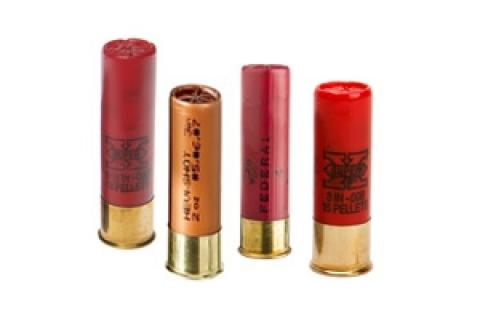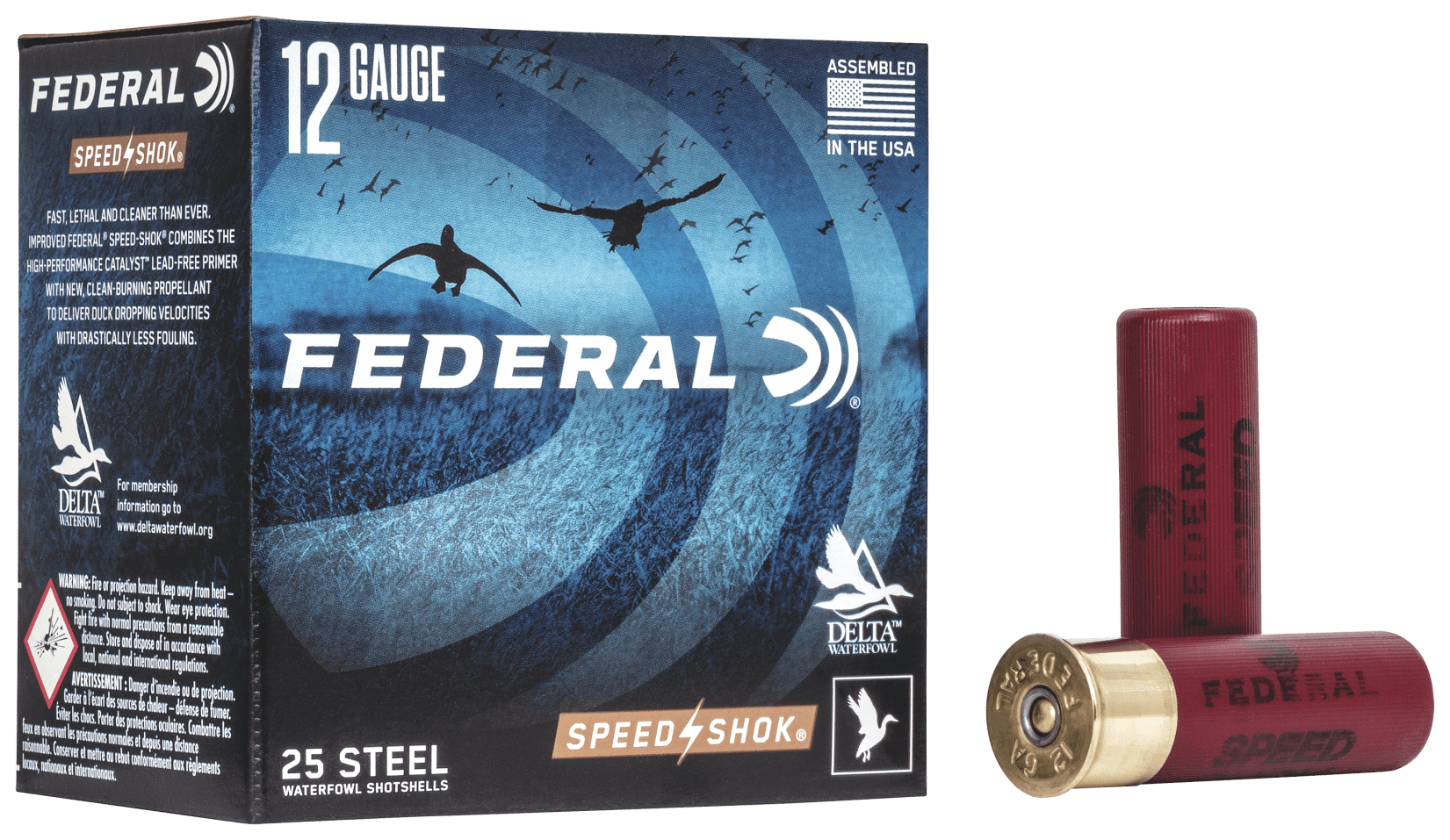
12 Gauge 3 1/2 Inch "Super Magnum"
The 3 1/2-inch 12-gauge "super magnum" was introduced about 25 years ago in response to waterfowlers having to switch to non-toxic shot alternatives, principally steel shot. As steel is lighter than lead, larger pellets are needed in order to match the performance of lead shot. This created a need for longer shot shell hulls to hold more of these larger steel pellets in order to maintain pattern densities.
These super magnums quickly became extremely popular with waterfowl hunters, especially goose hunters. But turkey hunters also came to appreciate the increased payload of these longer shells, and suddenly new models of shotguns in all action types began to be offered in this new chambering.
Federal Premium Speed-Shok Waterfowl Load Shotshells
Top-quality steel Federal Premium Speed-Shok® Waterfowl Load Shotshells at a great price. Extremely round shot flies true and retains maximum energy for sure kills and reliable performance.
Shop NowTechnological Advances
Although these super magnums remain popular today, with continuing strong sales particularly of autoloader and pump-action models, and new models being introduced each year, some hunters are now re-thinking this "bigger is better" philosophy. Part of the reason that non-toxic ammo is much better today than in the early days of steel shot, making 3-inch shells plenty effective for most situations. But the bigger issue is recoil.
The Recoil Argument
Anyone who has ever fired a 3 1/2-inch load will attest that the recoil is significant, particularly if the shotgun doesn't fit the shooter just right. Yes, top quality autoloading shotguns help tame some of this recoil, but it can still be imposing for many hunters, particularly when the action is hot and so is your shotgun barrel.
Are super magnums worth the extra recoil and expense? A standard 3-inch steel load contains 1 1/4 ounces of shot, while a standard 3 1/2-inch load has 1 9/16 ounces. That difference equates to roughly 22 more BBs, 39 more No. 2s or 60 more No. 4s. In lighter 3 1/2-inch loads of 1 1/2 ounces, the difference is about 18 more BBs, 31 more No. 2s and 48 more No. 4s. That can certainly make the difference between a hit and a miss or a cripple versus a clean kill.
Herter's Waterfowl Steel Shotgun Shells
Designed specifically for waterfowl hunting, Herter's® Waterfowl Steel Shotgun Shells provide reliable ignition and consistent velocities for enhanced hunting performance. Concentric steel shot, coupled with performance-enhanced wads, flies true at maximum velocities to deliver consistent, tight shot patterns for improved accuracy at extended ranges. This shotgun ammo is manufactured with premium hulls, primers, propellants, and wads. Aggressive quality control ensures reliable and consistent operation in all types of shotgun actions. Made in USA.
Shop NowWhen to Use 12 Gauge 3 ½ Inch vs 3 Inch Shotgun Shells
So, do you really need a super magnum? If you are only shooting ducks over decoys, you can do just fine with 3-inch loads, and probably even 2 3/4-inch. But if the ducks aren't decoying very well, or you're hunting geese, it's hard to beat the added performance of super magnums, as long as you can handle the recoil.
When you aren't quite sure what may come your way, and mixed bags of ducks and geese are often the norm whether hunting fields or water, it's nice to have the benefit of the super magnum, just in case. The same is true with turkey hunting. When the gobblers are coming nicely to your calling, even a 20-gauge is a deadly turkey taker. But when they aren't, having the ability to reach out to that hung-up tom is a big advantage.
Find What You Need, Your Way
Whether you're ready to make your next purchase online or prefer to visit a Bass Pro Shops store near you, we've got you covered. Explore our extensive selection of shotgun shells and outdoor gear online or find your nearest store here. Good hunting!
- 134649 views



